Blood and Guts (29 page)
Authors: Richard Hollingham
With round-the-clock care in a specialist burns unit, Jacqui gradually
started to recover. Since September 1999 she has undergone
more than fifty operations. Surgeons have done their best to rebuild
her face; they even managed to restore an eyelid that had melted in
the blaze. But now they've reached the limits of traditional reconstructive
surgery and there is little more they can do. Jacqui's face
remains terribly disfigured. Her features are crumpled, her neck
sagging, her skin a blotchy, crinkled patchwork. She has no hair,
eyebrows or lashes. Her nose is flattened and distorted, her nostrils
drawn upwards. She has only the remains of a single ear, and her left
eye is swollen. Jacqui is still recovering from the events of 1999 and
has devoted her life to campaigning against drink-driving.
After examining cases like Jacqui's, plastic surgeons such as
Peter Butler believe that face transplants are the only way forward.
Butler is one of Britain's top plastic surgeons and uses imaging techniques
to simulate the effects of a face swap. On a computer screen
his team can virtually place one face over another. In theory, the
technical problems of a face transplant have already been overcome.
The surgery is perfectly possible, although the cocktail of
drugs to prevent rejection would probably take ten years off a
patient's life. However, there are big ethical questions over whether
it is right to take the face of one person and transplant it on to
another. Our faces define us – how would a new face change us?
And what about the donor family – how would they react to seeing
the face of a loved one on somebody else's body?
Plastic surgery has come a long way since the brutal operations
conducted in early India, or Tagliacozzi's leather corset and pedicle.
The real triumph of plastic surgery has not been the cosmetic
surgery for the 'beauty cranks' – the botox, the silicone or the facelifts
– but the effort that has gone into fixing terribly damaged faces.
Over the centuries surgery has restored the faces of syphilis
victims, soldiers, airmen and the victims of fire or car crashes. Today
surgeons can save the lives of even the most badly burnt and injured
patients, such as Jacqueline Saburido, but despite all the advances in
modern medicine they can only do so much.
Soon (possibly by the time this book is published) someone in
the world will have received the first full-face transplant. You can bet
the story will be a sensation. However, advances in tissue engineering
will eventually enable surgeons to grow swathes of skin in the
lab. They have already been able to grow a human ear on the back
of a mouse. One day it might even be possible to construct an entire
new face from samples of a patient's own DNA. We can only hope
that the technology is used to reconstruct the faces of the victims
of conflict or tragedy rather than to boost the vanity of ageing
Hollywood stars, Page 3 models or the Gladys Deacons of this world.
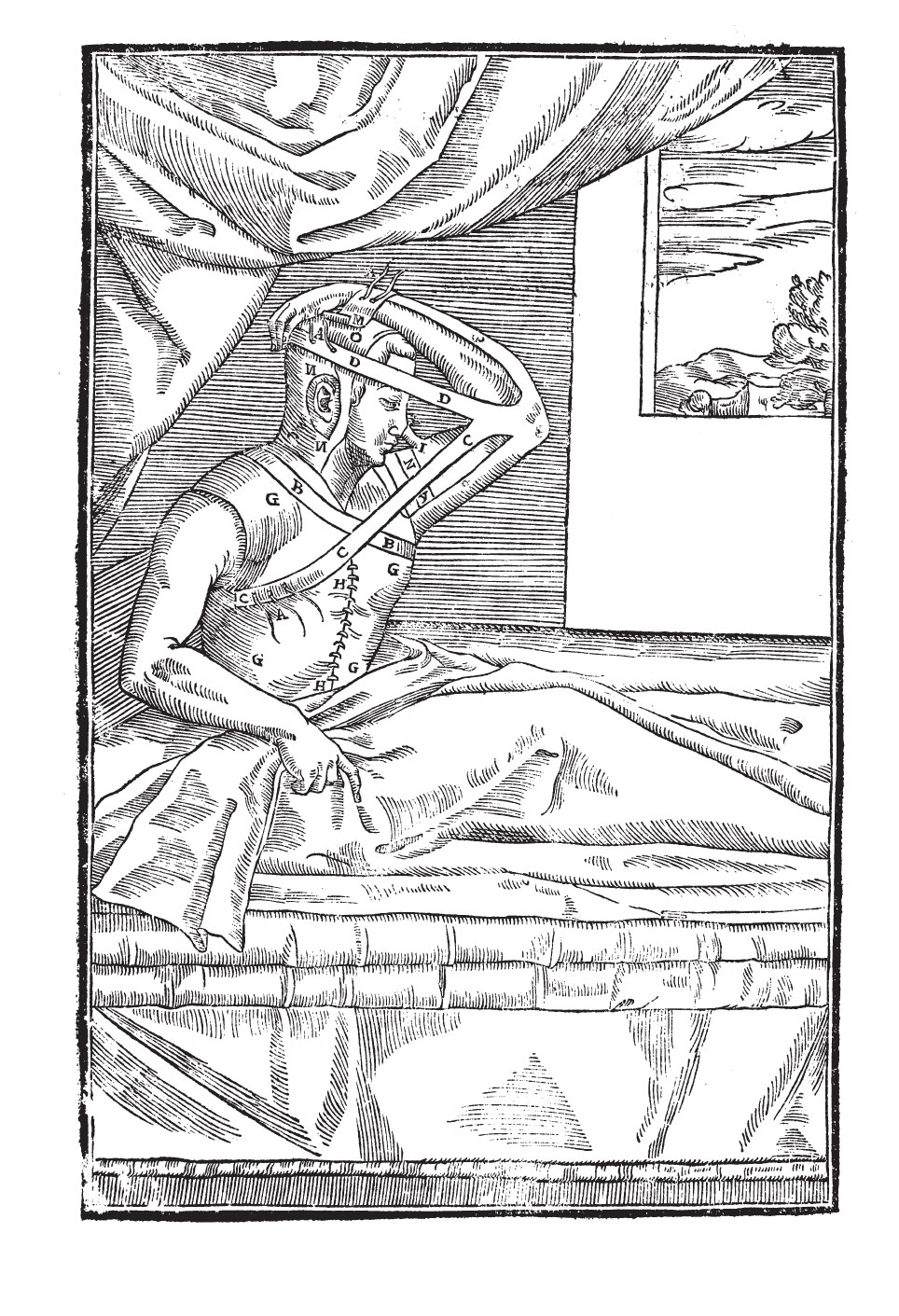
Tagliacozzi's 16th-century jacket-and-strap arrangement.
You can see the pedicle linking the patient's upper arm and face.
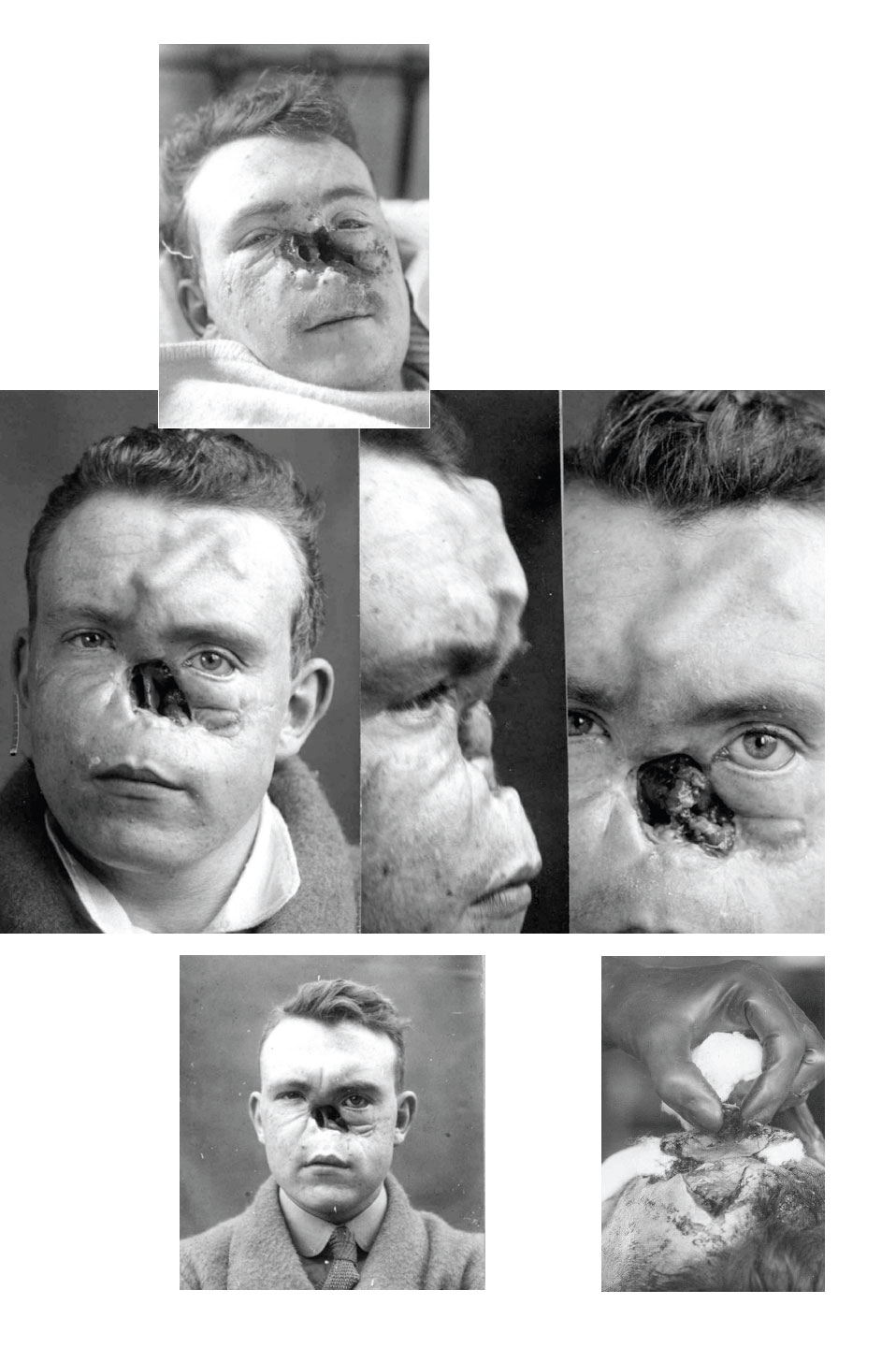
Rebuilding the face of
William Spreckley during the First World
War. The second picture shows the arrowshaped
piece of cartilage implanted
under the skin of Spreckley's forehead.
Looking at the final picture, it is hard
to believe that Spreckley was once
without a nose.
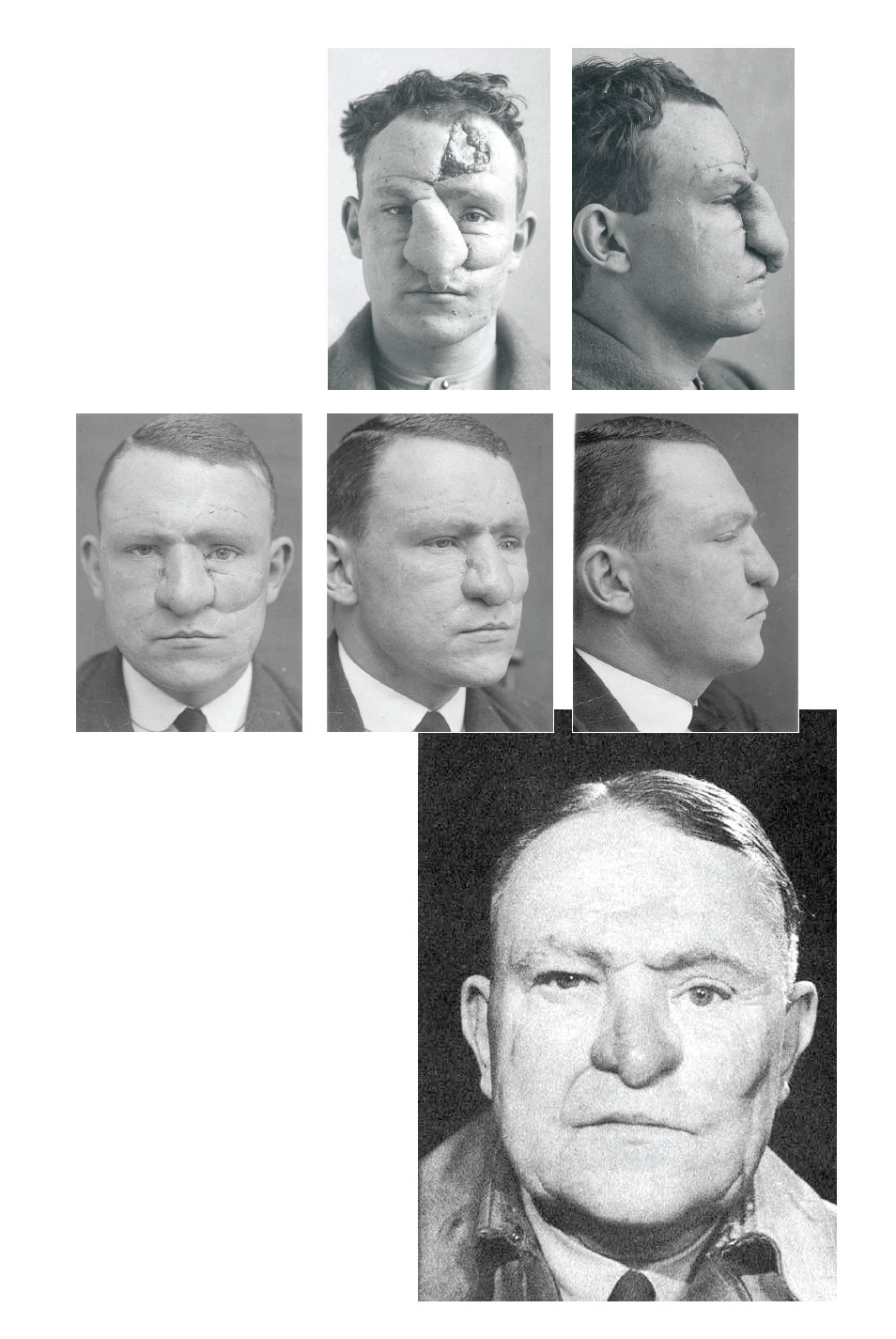
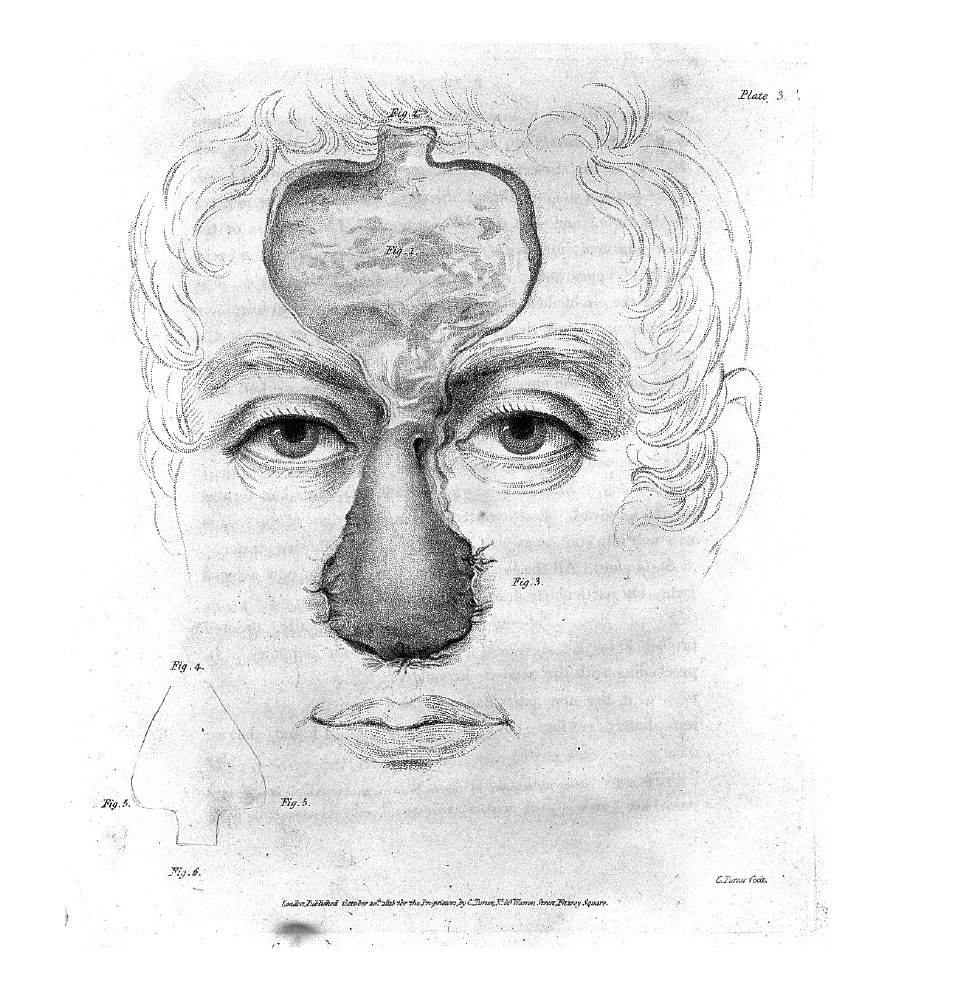
Drawing of an
early 19th-century
operation for 'restoring'
the nose. Although crude,
these procedures were
often successful.
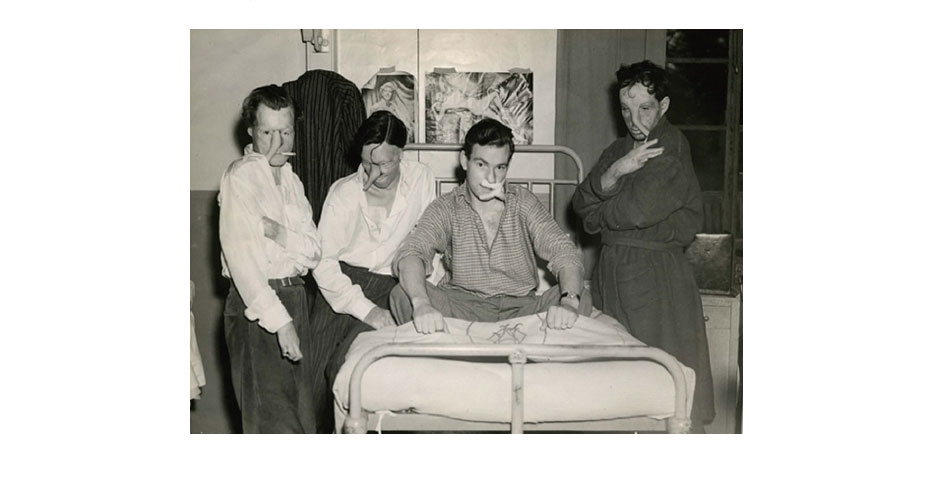
Four members of
the Guinea Pig Club in
their ward at East Grinstead
in the 1940s. They are all
sporting tube pedicles
showing the intermediate
stages of facial
reconstruction.
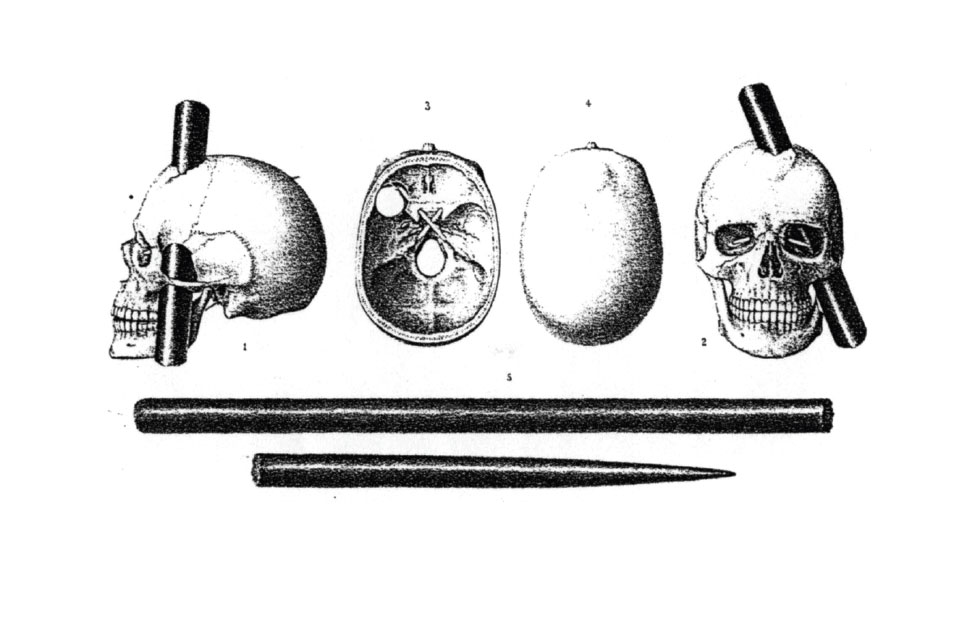
An 1850 interpretation of the passage of the
tamping iron through Phineas Gage's skull.
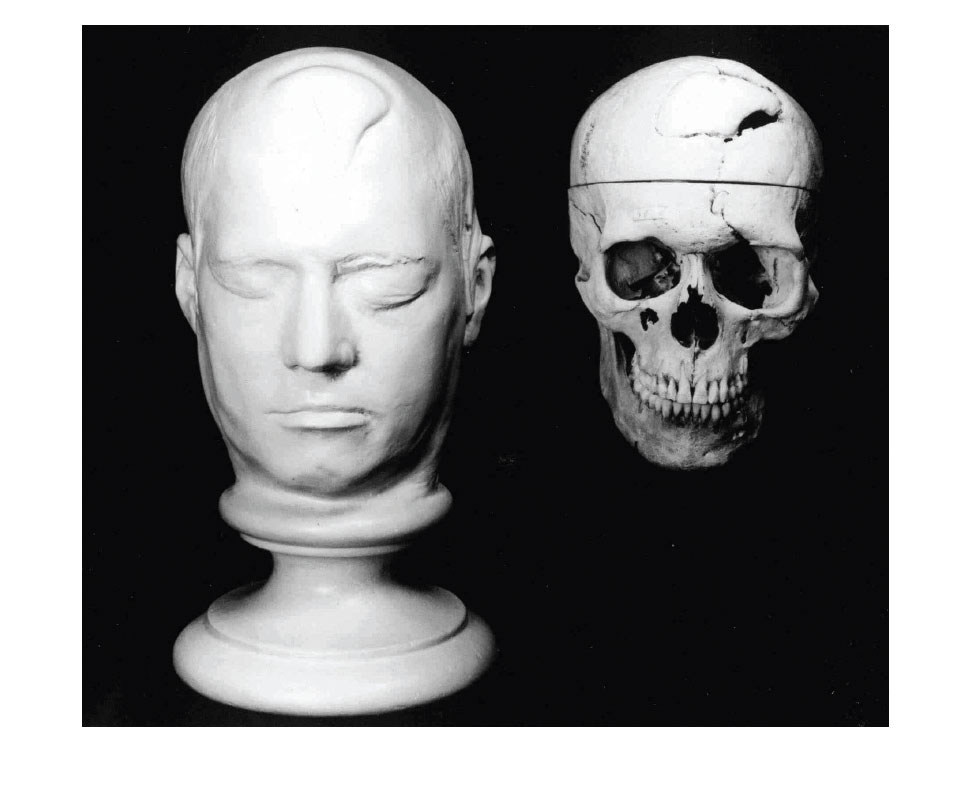
A mask made of Phineas Gage's face (probably when
he was still alive) pictured next to the railroad worker's skull.
The partially healed hole can be seen clearly on the top.
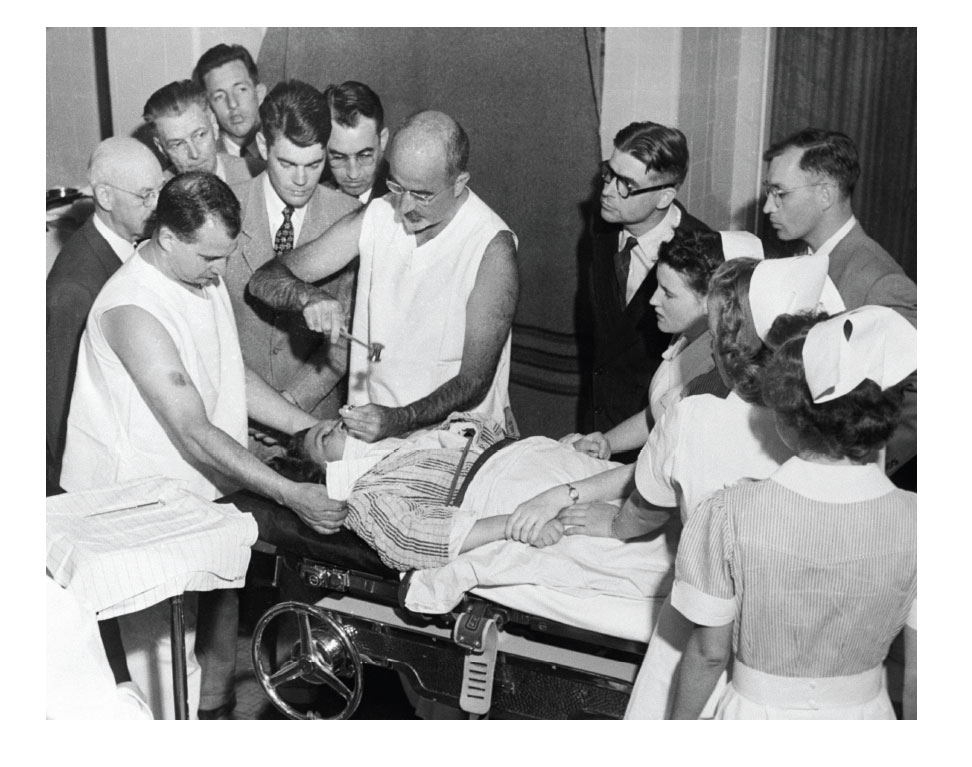
Another day at the office for lobotomist Walter
Freeman as he performs his procedure in front of a
fascinated audience. This picture dates from 1949, before
lobotomies became completely discredited.
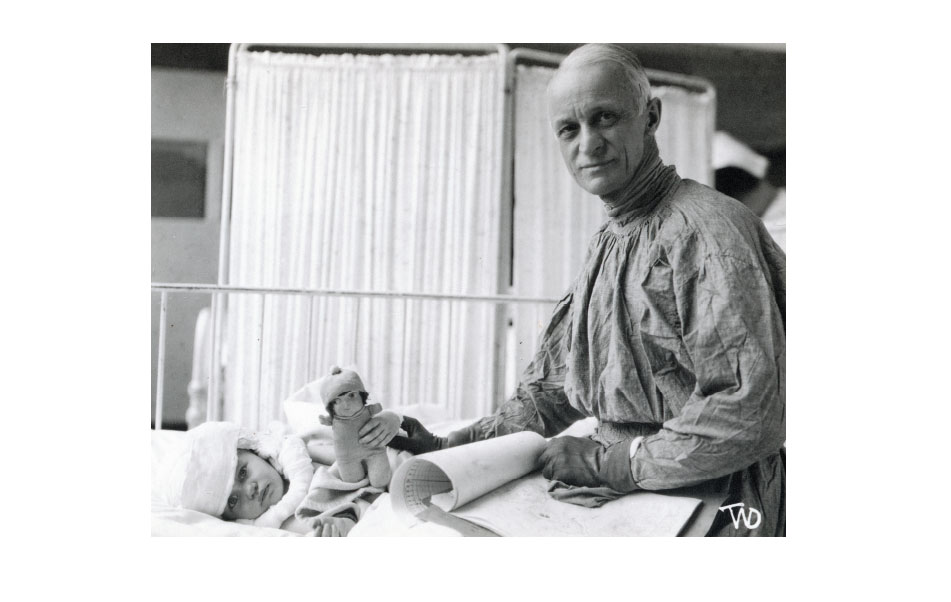
Harvey
Cushing, the
brilliant, god-like
surgeon who was
adored by his
patients.
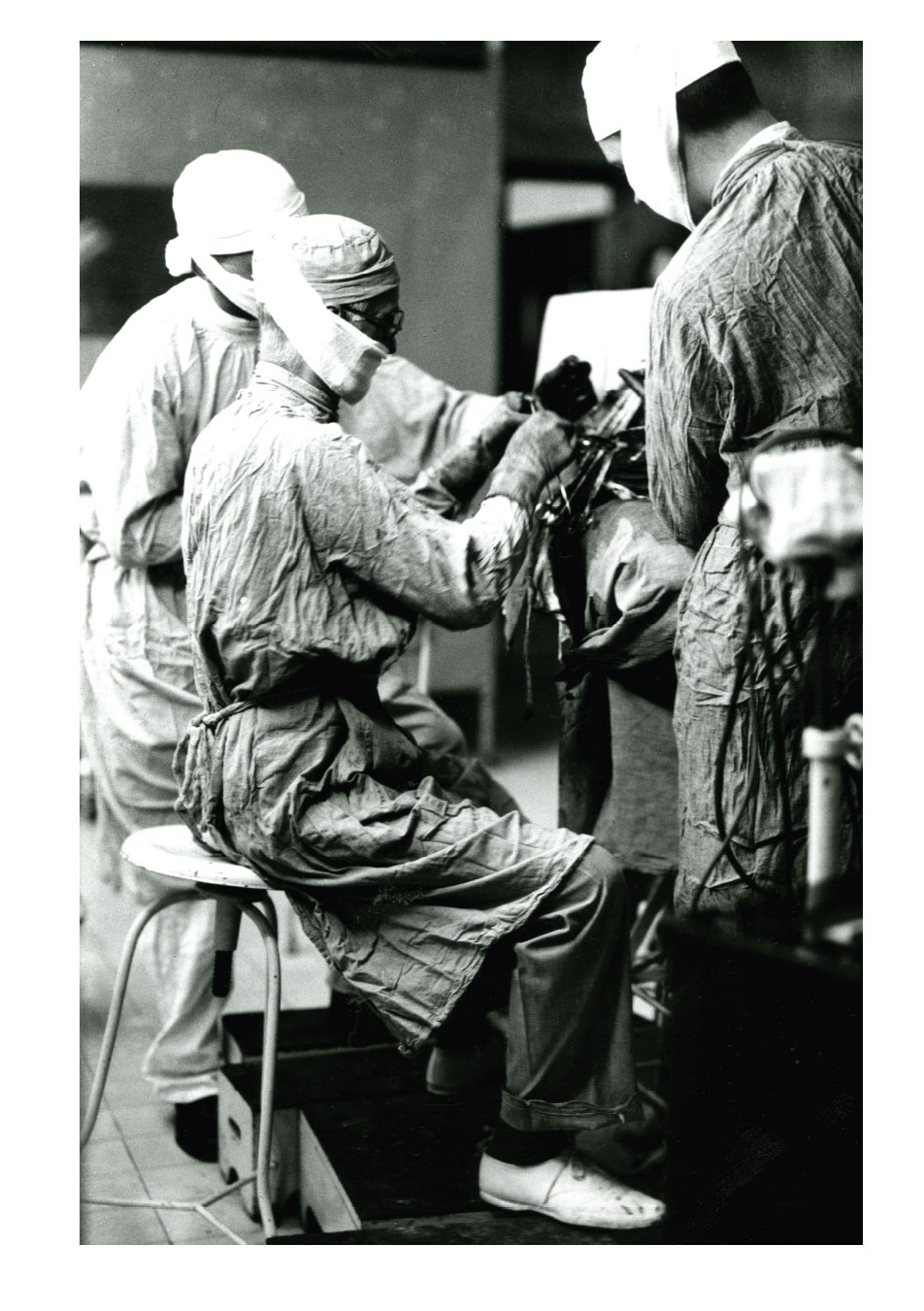
Harvey Cushing operating on his 2000th brain tumour
in 1931. During his impressive career, Cushing would save
hundreds of lives and transform brain surgery.